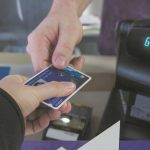UW Tacoma Husky Card Expansion Will Cost Over $65,000
The university is in the midst of planning the expansion of the Husky Card. The card currently provides students, faculty, and staff with a cashless means to purchase items with merchants that approve the card, which include: West Coast Grocery (WCG) and the bookstore. According to the proposal, expanding the card would “provide Tacoma-centric amenities that further enhance and support the campus experience.”
The proposal for a Husky Card expansion was submitted to the Student Technology Fee Committee (STFC) by a partnership between Student Engagement, Residential Life & Housing, and the Division of Finance & Administration. STFC is responsible for designing, reviewing, and determining costs for technology, and acquiring new technology for students in the future.
Associate Directors of IT, Paul Weed and Ed Mirecki, and Associate Director of Student Engagement, Surtida Shelton, assisted in the calculation and detail process that came along with organizing the proposal.
The total cost for the expansion is approximately $65,000, which includes the following software: a Blackboard Transaction Licensing System, transact BbOne Program, and Husky card reader hardware—all software vital to completing the expansion
The university allocated $10,000 towards legal counsel with K&L Gates.
“We worked with both UW legal services, and an external legal expert to address financial laws regarding transaction cards. In working with legal counsel, we wanted to ensure that this proposal to add another vendor would be both feasible and legal to do so,” says Mirecki.
According to the proposal document, “the Student Technology Fee proposal is seeking 50% of the initial first year start-up costs or $32,615.65 to get the Husky Card program underway.” Campus administration agreed to cover the starting cost of $32,615.65. This in turn will not increase tuition.
The Seattle campus has 60 dining and student service options, compared to UWT’s three.
In previous years, many students have communicated the need for a campus cafeteria; however, UWT has too few students for a dining facility to be feasible.
According to Mirecki, the university would need somewhere around 10,000 students to operate a dining facility that would be financially viable. The university is looking to expand housing next year. As a result more students will live on campus, which will cause for a need to build a dining facility.
“With more students living on campus, we need to be able to provide some sort of meal plan or meal service,” says Mirecki.
Although a cafeteria can’t be built at the current time, administration continues to search for alternative methods such as food trucks, like VietNom Nom and Budha Bear Bagels. Administration has also discussed on-campus food kiosks. The university and Husky Card operation policies are said to pose a limitation to UW Tacoma students because it requires that merchants be “internally operated by either the University or Housing and Food Services.”
The university has consulted with Blackboard Transact, a company that builds education technologies, and K&L Gates, an international law firm, to discuss what it would take to expand and the legal complexities to expand. After reviewing the expansion, the parties, with local university merchants as partners, developed the idea to extend the campus’s retail and restaurant options.
A study by Tripp Umbach and the City of Tacoma discovered that students who are worried about pricing and convenience, when it comes to food options, find themselves limited. By expanding the card, administration hopes to gain more merchants who will provide deals to students. Deals such as 10% off pizzas, or 15% off for students during lunch hour at Abella’s are examples of discounted pricing the university hopes to provide to students.
“One goal of the program is to be able to provide discounted pricing to students. The number one thing is, we know is price is a huge factor. Finding technology that can be tied to the Husky Card that would help facilitate that and lower the cost for students seemed like something that we could put together,” says Mirecki.
Some statistics illustrating the benefits of expanding the card include:
- 47% of students leave campus to eat lunch in Downtown Tacoma.
- 47% of UWT students eat breakfast on-campus 2-4 times per week.
- 41% of UWT students eat dinner on-campus 2-4 times week.
Administration expects the card expansion to take effect late summer 2016.






